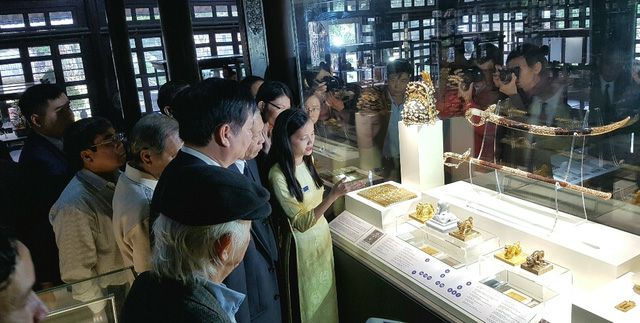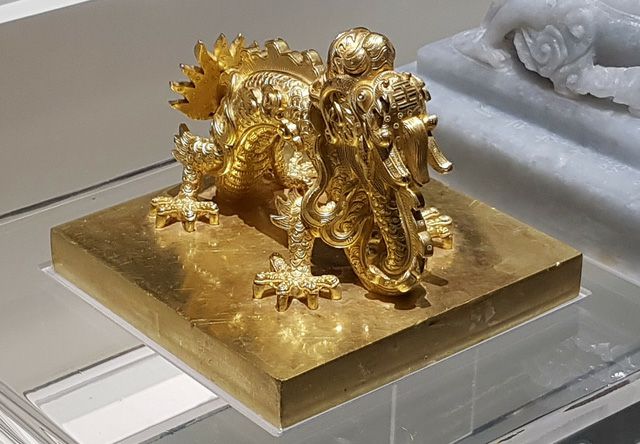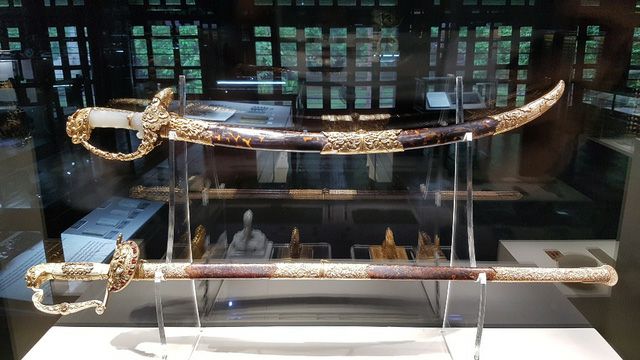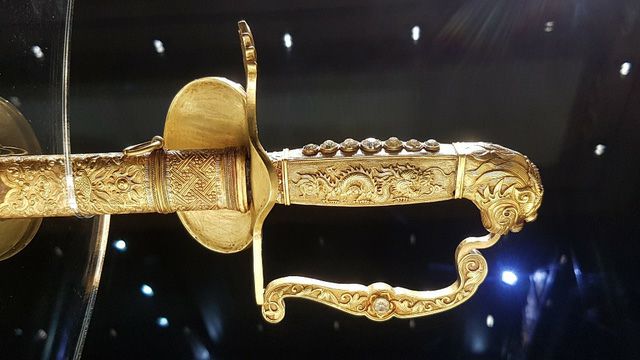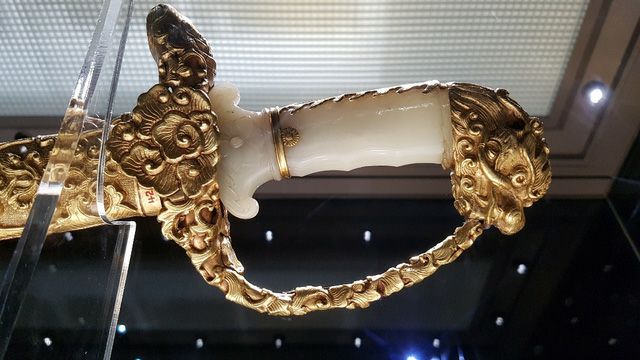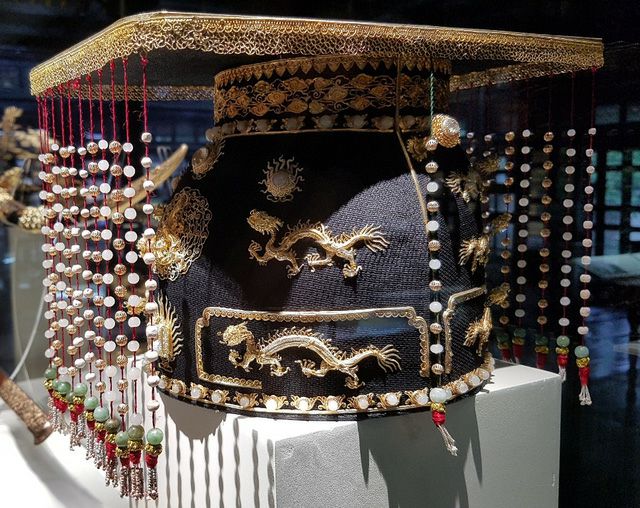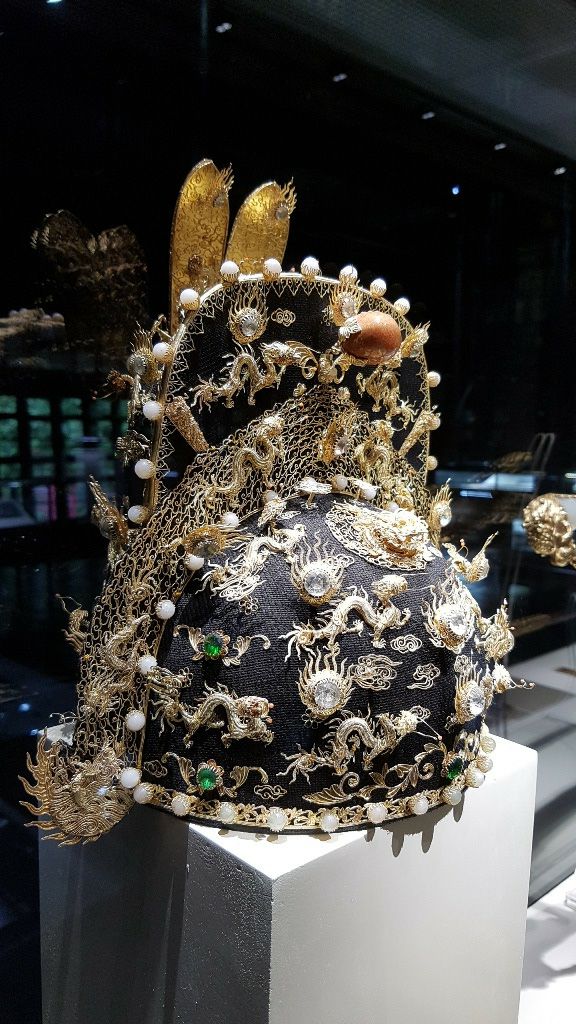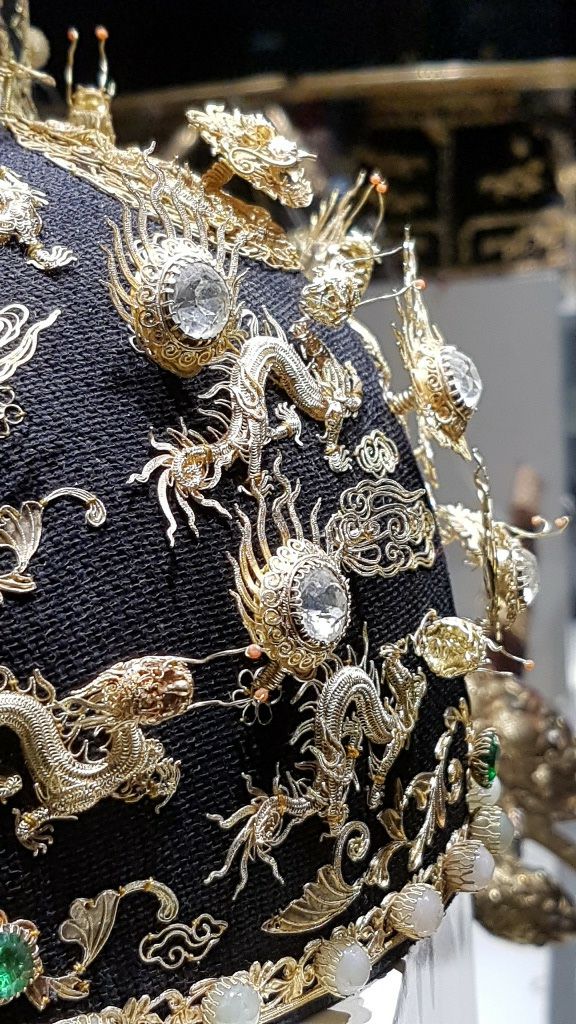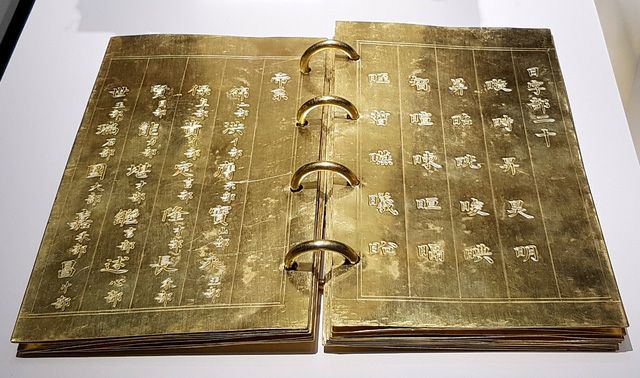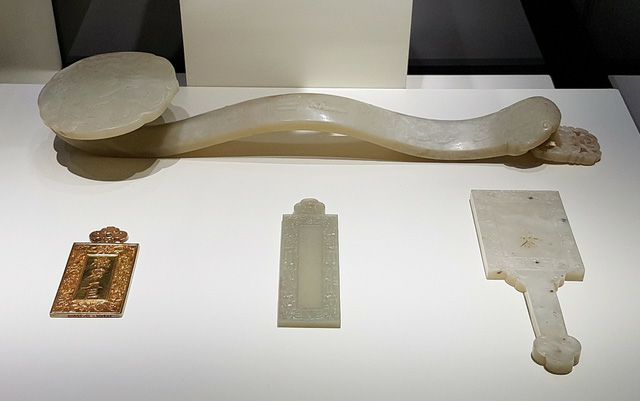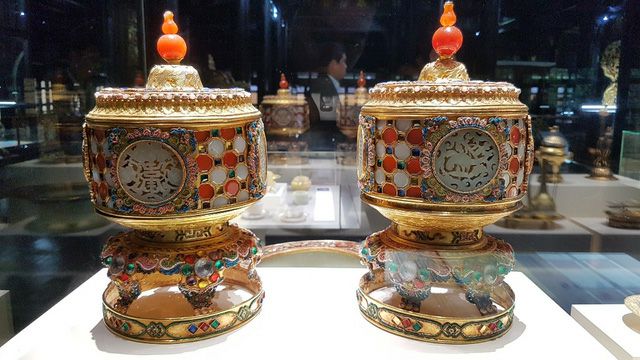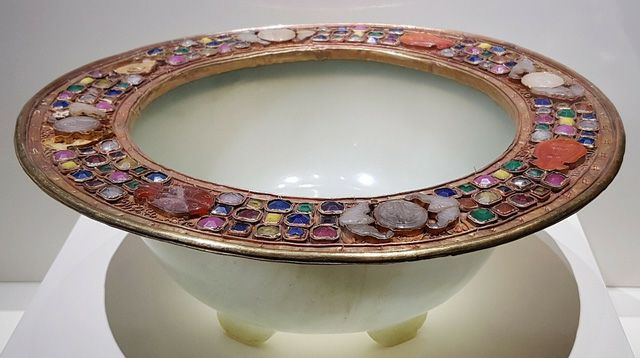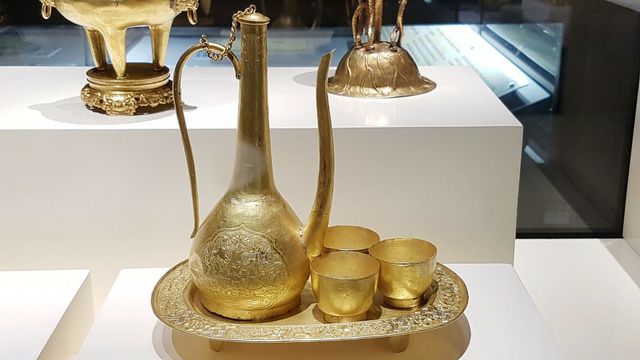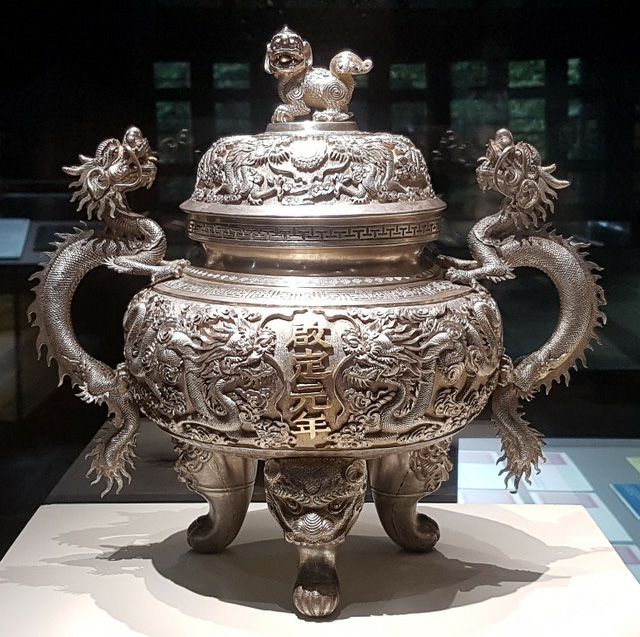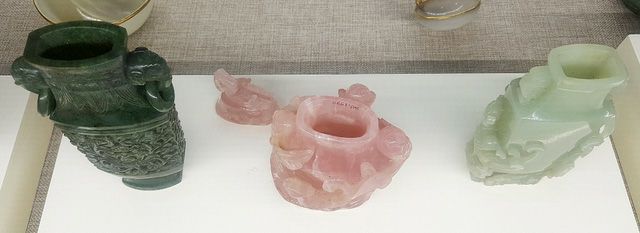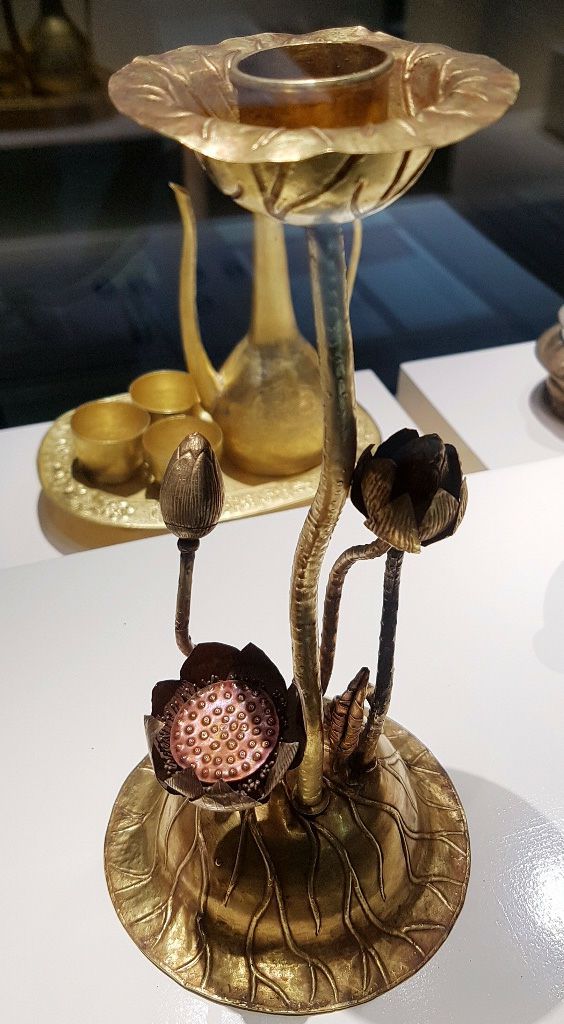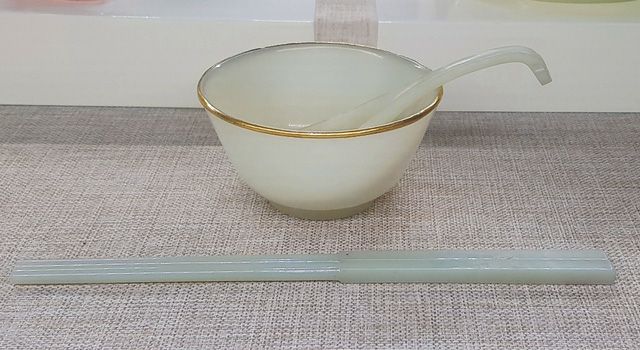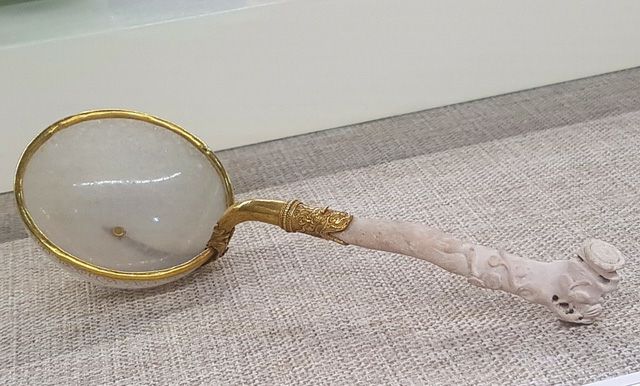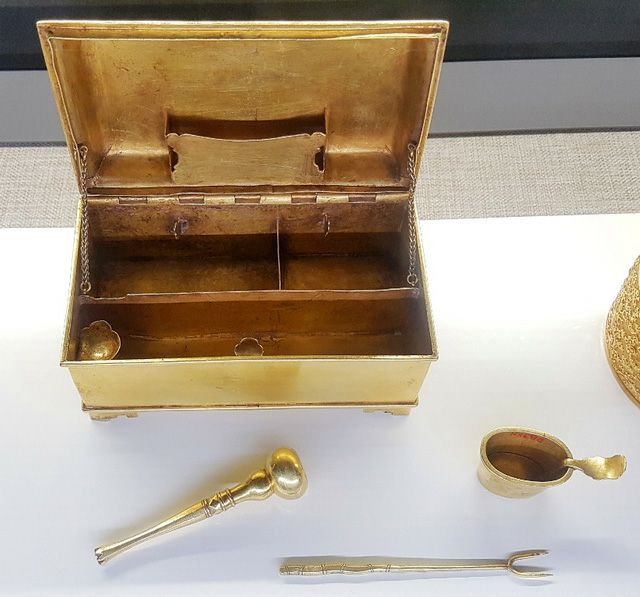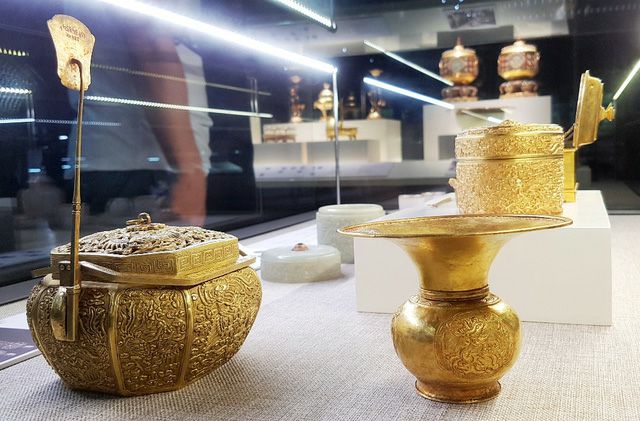“64 Royal Treasures of the Nguyen Dynasty Returning Home for the First Time”
On the morning of December 6th, at the Hue Imperial Antiquities Museum (3 Le Truc Street, Hue City), a large-scale exhibition was held for the first time, showcasing 64 extremely valuable treasures from the Nguyen Dynasty’s imperial court, which had once belong to Hue and had returned to its homeland.
In August 1945, after Emperor Bao Dai abdicated, the Nguyen Dynasty handed over most of its remaining treasures to the provisional government. This collection includes over 2,500 items, which were taken to Hanoi and carefully preserved during two national resistance wars. However, due to negligence in their protection, the emblematic symbols of imperial power—the Emperor’s seal (weighing nearly 10.5kg and adorned with gold and precious gems) and the golden-hilted sword—ended up falling into the hands of the French.
In 2007, the State Bank of Vietnam transferred the entire collection of valuable artifacts from the Nguyen Dynasty to the Vietnam National Museum of History (now the National Museum of Vietnamese History). This collection includes 85 imperial insignias and precious gemstones crafted during the reigns of the Nguyen lords and emperors.
Under the collaboration of the Hue Imperial Citadel Heritage Conservation Center and the National Museum of Vietnamese History, the exhibition “Treasures of the Nguyen Dynasty’s Imperial Court” showcased 64 valuable artifacts out of the 2,500 antiquities, which had been away from their homeland for 71 years. These artifacts were divided into four groups, with the most significant group being the collection of symbols of power, including seals, swords, golden books, royal headgear, and playing cards. Among them, seals and swords were considered the vital national treasures, symbolizing the presence, will, and commands of the Nguyen emperors.
The introduction of the imperial court’s power collection included seals, swords, royal headgear, playing cards, and golden books. The remaining three groups include stands of worship and ritual items such as altars, trays, incense burners, and candle; the stationary collection with pens, ink brushes, inkstones, pen holders, and paperweights; and the household utensils including bowls, plates, spoons, teapots, cages, and betel trays. All 64 treasures were exceptionally valuable due to their materials, such as gold, silver, gemstones, ivory, and their historical significance.
According to Dr. Phan Thanh Hai, Director of the Hue Imperial Citadel Heritage Conservation Center, within the framework of the collaboration between the center and the National Museum of Vietnamese History since 2015, two exhibitions have been organized: “Ancient Vietnamese Jewelry” and “Nguyen Dynasty’s Precious Gems and Golden Books,” introducing rare artifacts of the Nguyen Dynasty to the public at the Hue Imperial Antiquities Museum. However, it was not until today’s exhibition that a significant number of sacred treasures from the Nguyen Dynasty were brought back to Hue, and allowed the people of the former capital capital to have the opportunity to witness them firsthand.
This is the first time Hue has received a large number of Nguyen Dynasty treasures back to its ancient land. Among the treasures returned today are the “national instruments,” which even the high-ranking officials of the court rarely had the chance to see. These treasures have been passed down from generation to generation, symbolizing the legitimacy and supreme power of the Nguyen emperors.
In addition to the various seals, gemstones, and golden books, the exquisitely crafted office items and daily utensils used in the imperial court, made of precious materials such as gold, silver, and gemstones, reflect the high aesthetic value and rich spiritual life of the Nguyen emperors.
With a lifespan of 143 years, the Nguyen Dynasty (1802-1945) left behind an extensive heritage in the ancient capital of Hue, encompassing both tangible and intangible treasures of outstanding global value. Among them, the Complex of Hue Monuments was recognized as a UNESCO World Cultural Heritage site in 1993, while the Royal Court Music of Hue, known as “Nhã Nhạc,” was honored as a Representative Intangible Cultural Heritage of Humanity in 2003. Furthermore, three documentary heritages were acknowledged as UNESCO World Documentary Heritage, including the Woodblocks of the Nguyen Dynasty (2009), the Imperial Archives of the Nguyen Dynasty (2014), and the Poetry and Literary Works on Hue Royal Architecture (2016). Moreover, the Nguyen Dynasty also bequeathed the largest number of royal treasures compared to other feudal dynasties in the nation’s history.
Imperial Treasures of the Nguyen Dynasty:
The “National Trust Seal,” made of gold during the reign of Emperor Gia Long (1802-1819), was used for summoning military leaders, mobilizing soldiers, symbolizing military recruitment, and important administrative documents. The seal measures 11.7×11.7cm, with a height of 9cm and a thickness of 1.65cm.
Golden seals were made for Queen Mother Hoang Thai Hau, the mother of Emperor Tu Duc; silver-gilt seals were made for Queen Nam Phuong, the wife of Emperor Bao Dai; silver-gilt seals were made for Crown Prince Bao Long, the son of Emperor Bao Dai; and a jade seal was made for Emperor Thieu Tri for issuing imperial edicts to vassal states and important announcements for the nation.
Two swords, including the “People’s Welfare Sword” (bottom) made of gold by Emperor Khai Dinh, with a length of 90cm, symbolize royal authority, the essence of the nation, and the gold and jade sword above it.
Close-up of the exquisite details on the hilt of the two swords for the king.
The “Heavenly Equality Hat” made of gold, precious stones, and coral. The king wore this hat during the annual Heaven and Earth worship ceremony at Nam Giao Esplanade, praying for favorable weather, national prosperity, and peace throughout the country.
Front and back view of the gold, precious stone, and coral Royal Hat, measuring 28.6cm in height and 26.6cm in diameter. The king used this hat for imperial ceremonies, resolving major national issues, conducting diplomatic meetings with foreign envoys, and performing ancestral worship rituals.
The golden dragons intricately attached to the hat look lifelike.
The “Imperial Heritage” gold book, weighing 23.2cm in length and 13.7cm in width, contains 13 gold pages. It was cast in 1823 during the reign of Emperor Minh Mang. The book features 20 Japanese characters and an imperial poem titled “Imperial Heritage,” issued by Emperor Minh Mang in 1823. With this poem, the king desired the throne to be passed down through 20 generations, lasting for 500 years. However, it ended with the phrase “Vinh,” which means the fifth generation, as subsequent emperors belonged to different lineages or the previous generations.
The King’s jade seal (placed above) symbolizes the monarch’s power and is held during imperial ceremonies, along with the gold “Co Mat Dai Than” cards used by the Great Mandarins in the Co Mat Institute. This institute was responsible for advising on the most important matters of the court, particularly in military affairs, established in 1834. The “Ngu Tien Sac Menh” jade cards were used by the Court Officials below.
A gold, precious stone, coral, and jade shrine used to hold ceremonial objects during the ancestral worship rituals in the imperial palace.
The exquisite beauty of the imperial treasures.
A jade bowl with gold plating and precious stones, measuring 10cm in height and 29cm in diameter, used for the king’s daily activities.
A set of gold teapot, cups, and wine tray used in the imperial court.
A gold incense burner, 18cm in height and 8cm in diameter, used for burning incense.
An intricately crafted silver incense burner, the first one during Khai Dinh’s reign in 1916, used for burning incense during court ceremonies.
A jade inkstone with gold accents used for grinding ink and lipstick in the imperial court.
Jars and jars of jade used to hold aromatherapy.
A 25cm tall gold candle holder with an 11cm diameter, used in the imperial court.
Jade bowls with gold plating and a pair of jade chopsticks used during royal meals.
A gold-plated jade spoon with a coral handle, measuring 18.3cm in length, used during royal meals in the Nguyen Dynasty.
A set of gold utensils for chewing betel, used by the king or queen, including a betel nut crusher, betel leaf holder, areca nut cutter, and other accessories.
From left to right is a gold incubator used to put coal in for winter heating, a golden spittoon for storing excess water and betel juice and a golden box for storing betel nut.
Visitors stand in awe before these precious golden treasures in the former imperial capital of Hue.
Hits: 1
